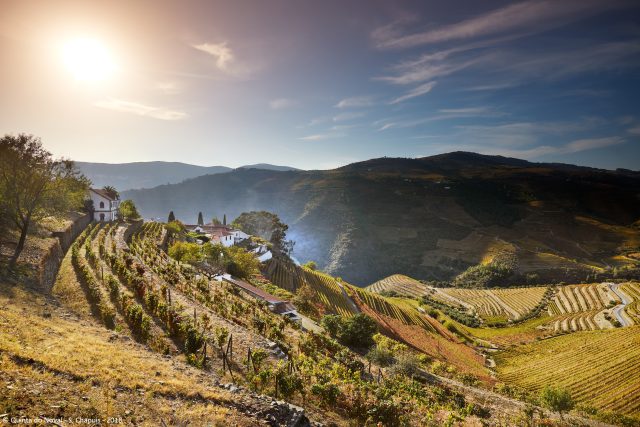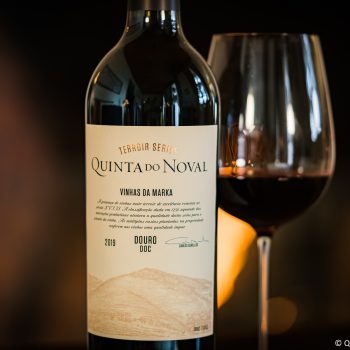This website uses cookies so that we can provide you with the best user experience possible. Cookie information is stored in your browser and performs functions such as recognising you when you return to our website and helping our team to understand which sections of the website you find most interesting and useful.
Douro’s dry wines enter a new phase of maturity and sophistication
In the mid-19th century, Joseph James Forrester – a legend in the history of the Douro Valley – caused uproar by claiming that “pure” Douro wines should never be fortified. Even at the time, his stance against the product that had brought the valley fame and fortune – Port – was a fringe belief. Even so, Forrester might have been mildly encouraged by more recent developments.

Today, production in the Douro is evenly split between Port and unfortified wines. Advances in vineyard and winery are bringing new levels of quality and diversity, thanks to the valley’s palette of native grape varieties (plus a few incomers), a focus on small parcels of old vines, and a new breed of serious white wines unthinkable a generation ago.
Nowhere is this ambition more evident than in Quinta do Noval’s Terroir Series, launched this week with the £175 bottling of Vinhas da Marka, a 2019 field blend sourced from a 1.45-hectare plot of vines planted in 1930. Barca Velha aside, this 2,752-bottle release is set to become the valley’s most expensive unfortified wine. Nor will it be the last of its kind.
“The idea of the Terroir Series is for us to identify small, individual, unique parcels of vineyard capable of making wines that are among the very greatest that the Douro can produce,” explains Christian Seely, MD of Noval owner AXA Millésimes. “The Vinhas da Marka 2019 is the first of these wines, but we have already identified one or two other remarkable parcels, and there will be more great wines from these individual parcels appearing in the future.”
The philosophy underpinning the Terroir Series has echoes of Noval’s vintage Port policy. There, an unbroken succession of 10 declarations reflects Seely’s conviction that Noval’s large and diverse vineyard is capable of delivering vintage quality – albeit sometimes only in tiny quantities – in all but the worst of years.
Vinhas da Marka, however, is not sourced from Quinta do Noval, but from Quinta da Marka, a property the business leases from the Agrellos family – Carlos Agrellos being Noval’s technical director, a role he assumed on the retirement of his uncle, António.
Seely is convinced that Marka, an 11ha vineyard on the right bank of the river close to Quinta do Crasto, has “some of the most remarkable vineyard terroir in the Douro” – a belief he says the 2019 vintage “confirmed absolutely”.
Agrellos highlights the vineyard’s relatively low elevation (140-180m), its “very particular placing” – west-facing, but shaded from the fiercest heat by two mountains – and its soils, slightly deeper than the norm. “That means that this vineyard in particular withstands the heat that the Douro throws at us on a regular basis,” he says. Even by Douro standards, yields are tiny: about 15hl/ha.
With Vinhas da Marka, grape variety is secondary, not least because it is a composition of more than 30 Douro grapes. But then fixating purely on varietal only tells part of the story. After all, Noval’s Touriga Nacional expression combines grapes from different elevations and expositions: full-bodied wines from lower altitudes; fresher ones from higher plots. One grape variety but, thanks to the diversity of the terroir, still a blend.
Over the years, some of the changes at Noval – and at Quinta da Romaneira, where Seely is MD and co-owner, and Agrellos winemaker – have raised eyebrows, with experimental plantings encompassing Syrah, Petit Verdot, Mourvèdre and Cabernet Sauvignon.
While Syrah and Petit Verdot remain, the others are gone. “Those two didn’t really adapt to the Douro,” says Agrellos. “They didn’t taste like Douro wines, they tasted like the varietal.” Why introduce a non-indigenous grape if it doesn’t express the local terroir?
By contrast, Syrah and Petit Verdot have acclimatised to the Douro and taken on some of its characteristics, and both are now part of the Noval single varietal range, labelled as “Vinho Regional Duriense” as they are not entitled to the Douro DOC designation.

Then there is Semillon, or rather Boal do Douro – not an incomer, but a native variety. Romaneira’s Pulga Douro DOC white blend combines 50% Boal with 33% Viosinho and 17% Rabigato. Agrellos has consciously “pushed the limits” on oak – five months in French, 60% of it new.
Boal/Semillon, he says, is “very difficult” in the Douro because of early ripening, with picking at Romaneira beginning on 10 August this year. The pay-off, Agrellos adds, is good phenolic ripeness and the elimination of any green or herbal flavours in the wine.
Wines such as Pulga and Quinta do Noval’s Reserva branco – first vintage 2021, a barrel-fermented 60/40 blend of Viosinho and Gouveio – are raising the profile and reputation of the Douro’s white wines. Meanwhile, lessons are being learned about how to work with the region’s array of white varieties.
Downstream at Quinta do Vallado, for instance, Francisco Ferreira is a fan of Arinto, Gouveio and Viosinho – plus Rabigato for acidity – but is less convinced about the merits of Malvasia Fina, Fernão Pires or Codega.
Intriguingly, the white blend made at Quinta do Passadouro – Noval’s sister property in the Pinhão Valley, acquired in 2019 – includes Codega, and Agrellos is wary of generalising about individual grape varieties in a region as diverse as the Douro.
“People with a different-facing vineyard could be doing something completely different with the same variety,” he says. “If a grape isn’t working with this exposure, it might work with a different one, or at a different altitude. If it’s not working at 200m, it might work at 300m.”
So convinced is AXA Millésimes of the potential of these wines that Noval is currently building a large and eye-catching circular barrel room below the quinta, recognition that its dry wines require different cellaring conditions to those used to mature its Ports.
However wrong Joseph James Forrester might have been about the merits of fortification, such developments offer clear evidence that, nearly two centuries after he arrived in the Douro, the region’s dry wines are entering a new phase of maturity and sophistication – and one that now embraces both red and white styles.

